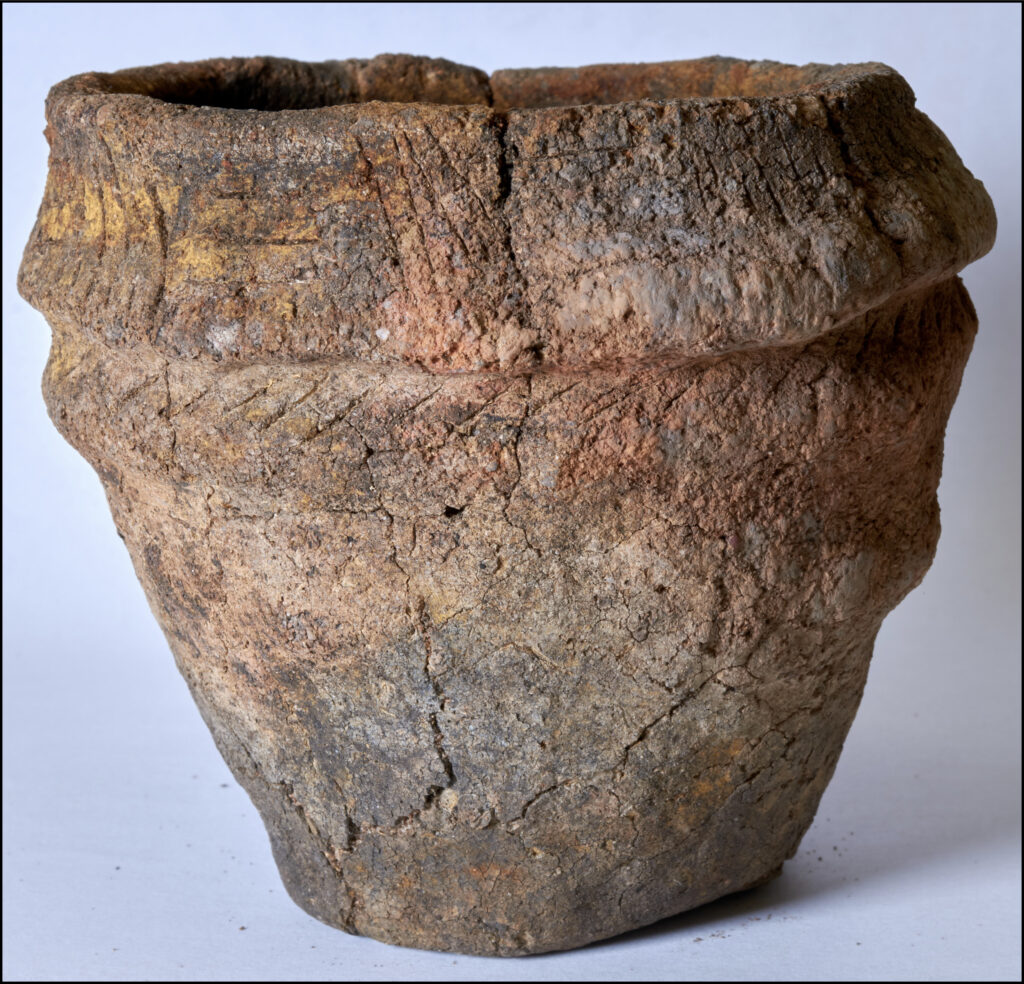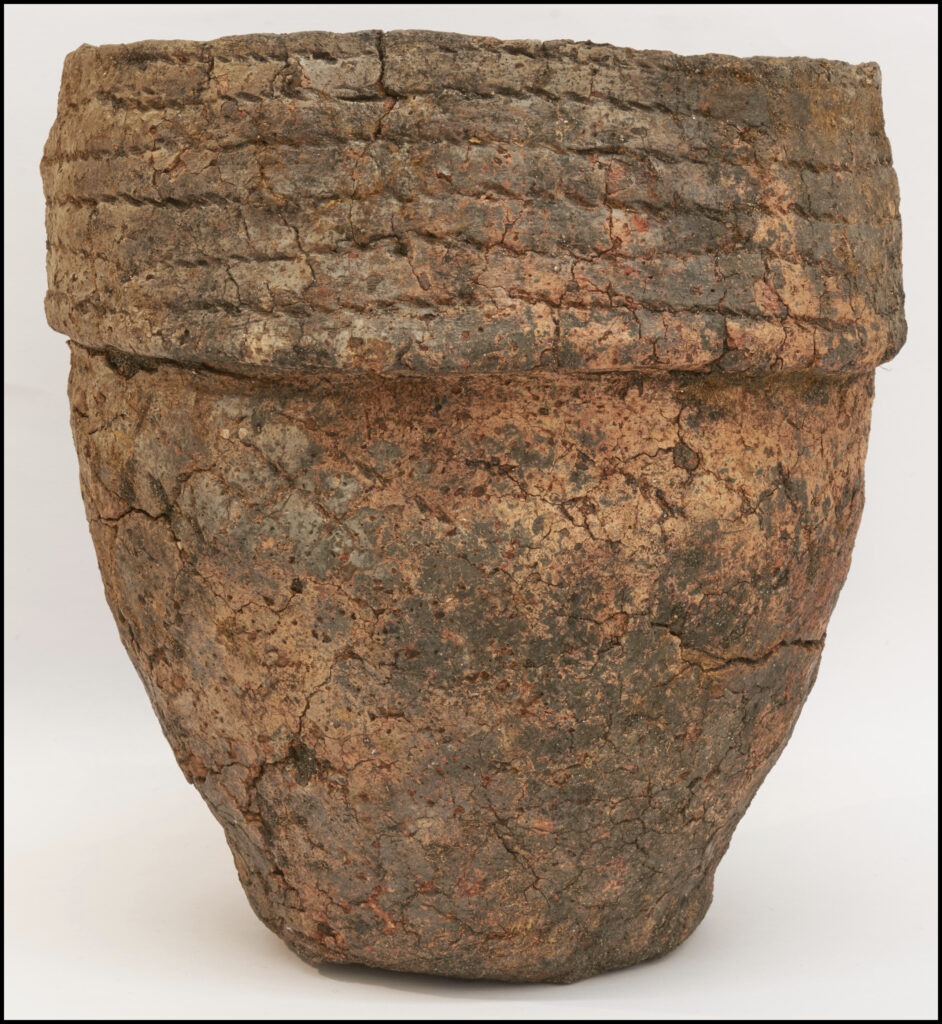This research is focussed primarily, but not exclusively, on Neolithic and Bronze Age pottery found during the excavations along the route of the Lincoln Eastern Bypass. The sherds and complete vessels come from pits, funerary activity within and between round barrows and from post-prehistoric features. The early prehistoric pottery from the Lincoln Eastern Bypass forms the most comprehensive collection of stratified ceramics in the East Midlands dating to the 3rd and 2nd millennium BC. Most activity appears to have taken place on the flood plain north and south of an ancient course of the River Witham represented by a palaeochannel. An assessment of the pottery has been completed and analysis is in progress supported by Network Archaeology and Lincolnshire County Council.
Peterborough Ware
Apart from one possible sherd of the Fengate sub-group all the Peterborough Ware from LEB is in the Mortlake style. This is in a predominantly flint tempered fabric ornamented with extensive and heavy use of impressed decoration created using twisted and whipped cord, reeds or twigs, fingertips, and the articular ends of bones from birds and small mammals. In form, the vessels are heavily carinated bi-partite bowls with a range of moulded rim types. This is the largest collection of Peterborough Ware to have been found in Lincolnshire and is particularly important for its stratigraphic contexts.
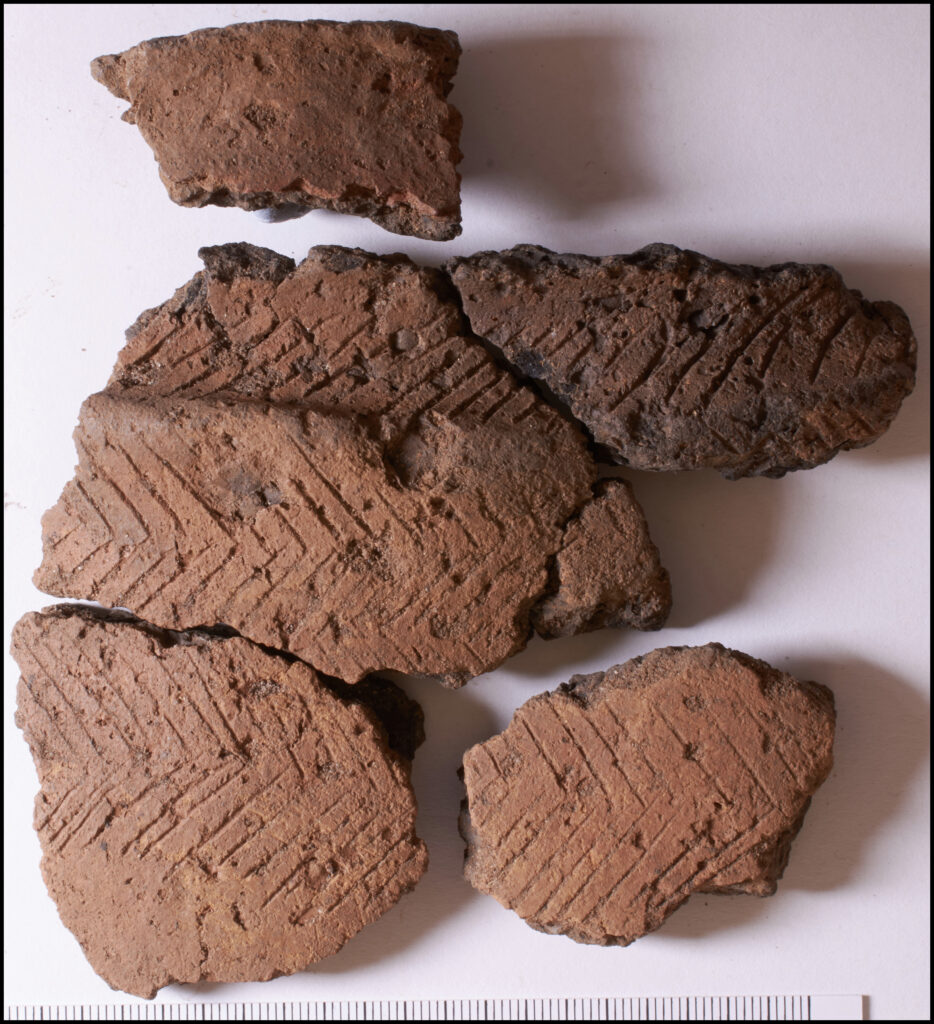
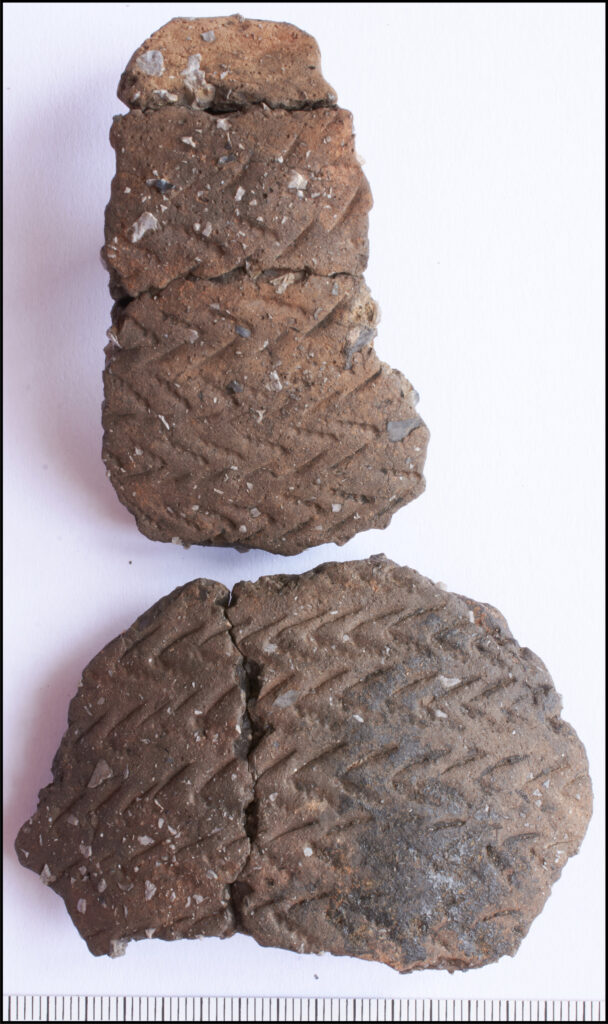
Grooved Ware
The depositional contexts of Grooved Ware are similar to the Peterborough Ware, in pits and pit-clusters and on the old ground surface beneath later round barrows. A detailed study of the Grooved Ware is in progress. Several distinctive traits can be noted which suggest an affinity with the Clacton/Woodlands cluster, rather than the Durrington Walls style. Rims with horizontal grooved decoration internally, multiple grooved and incised chevrons, and dot-filled grooved or incised triangles all feature on LEB sherds and belong to the Clacton Style. Cordons also feature and these are typical of the Woodlands Style. Spiral decoration, a feature of the Durrington Walls Style is lacking. However, some traits are common to all styles and definitive identification awaits further study.
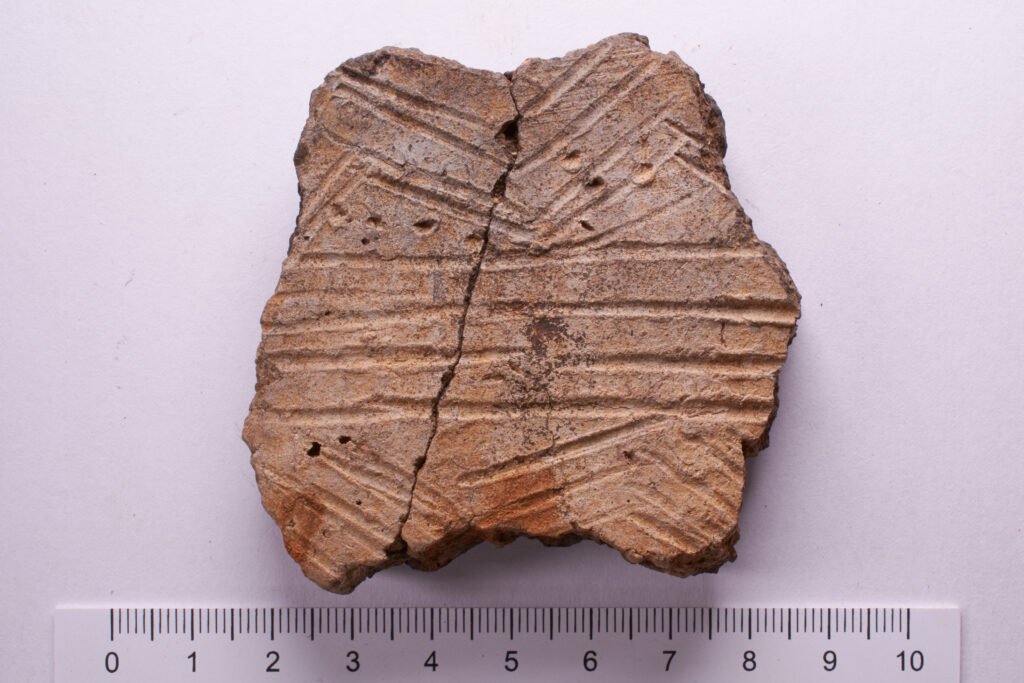
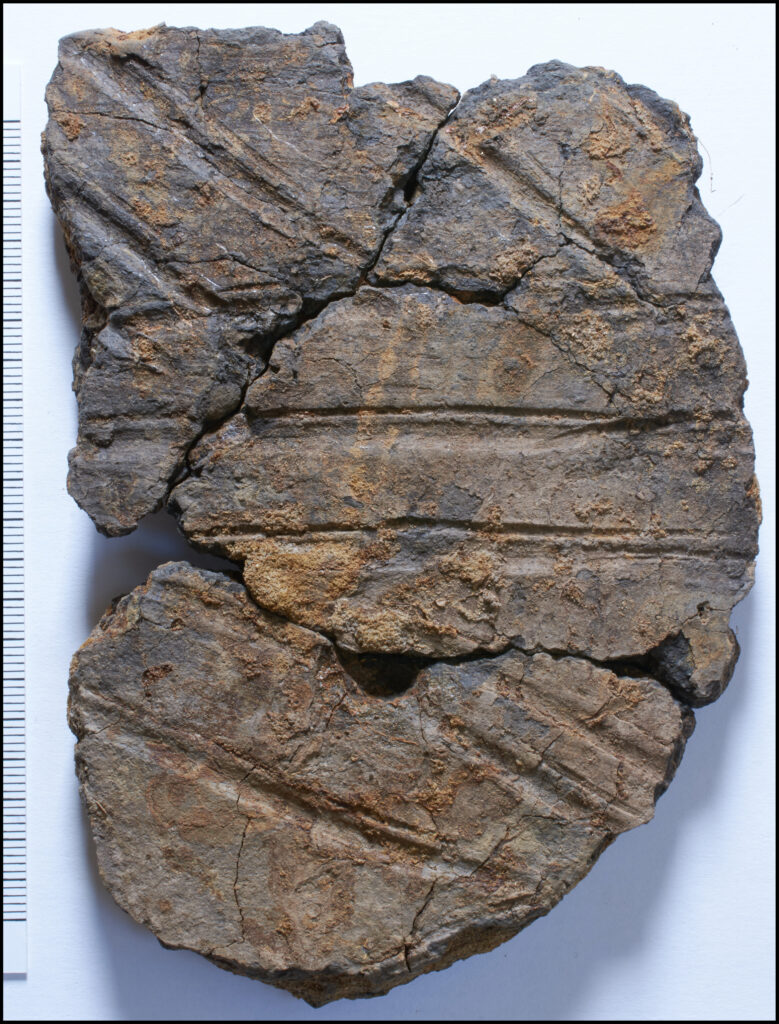
Beaker
The stratified Beaker pottery follows a similar depositional pattern to Peterborough Ware and Grooved Ware, having been deposited in pits, present in the palaeosol, or on the old land surface beneath later features. Beaker pottery from LEB appears to span almost the entire temporal range of this pottery style from Low-Carinated with All-Over Cord decoration (AOC) to Long-Necked (S3). Of particular significance is the collection of fine and rusticated Beaker from a pit on the limestone south of Washingborough Road.
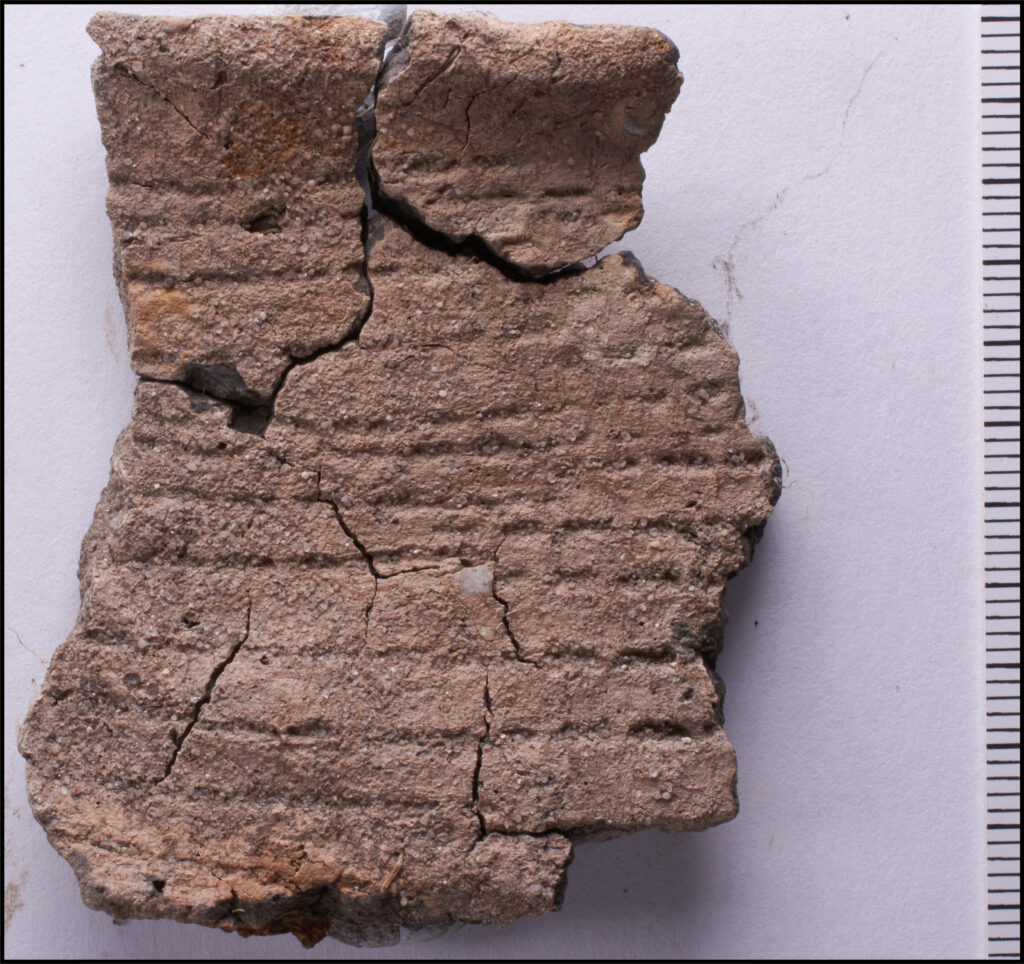
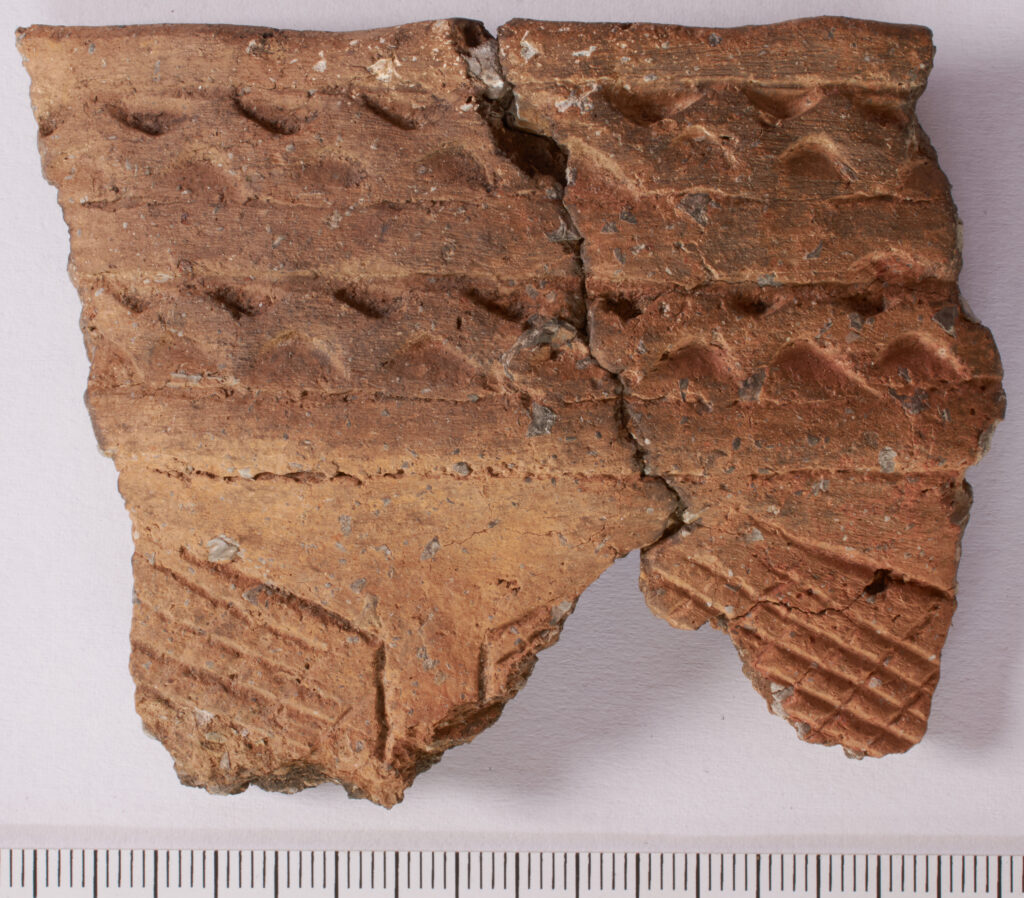
Food Vessel
Only three Food Vessels were identified during the assessment, all from round barrow contexts.
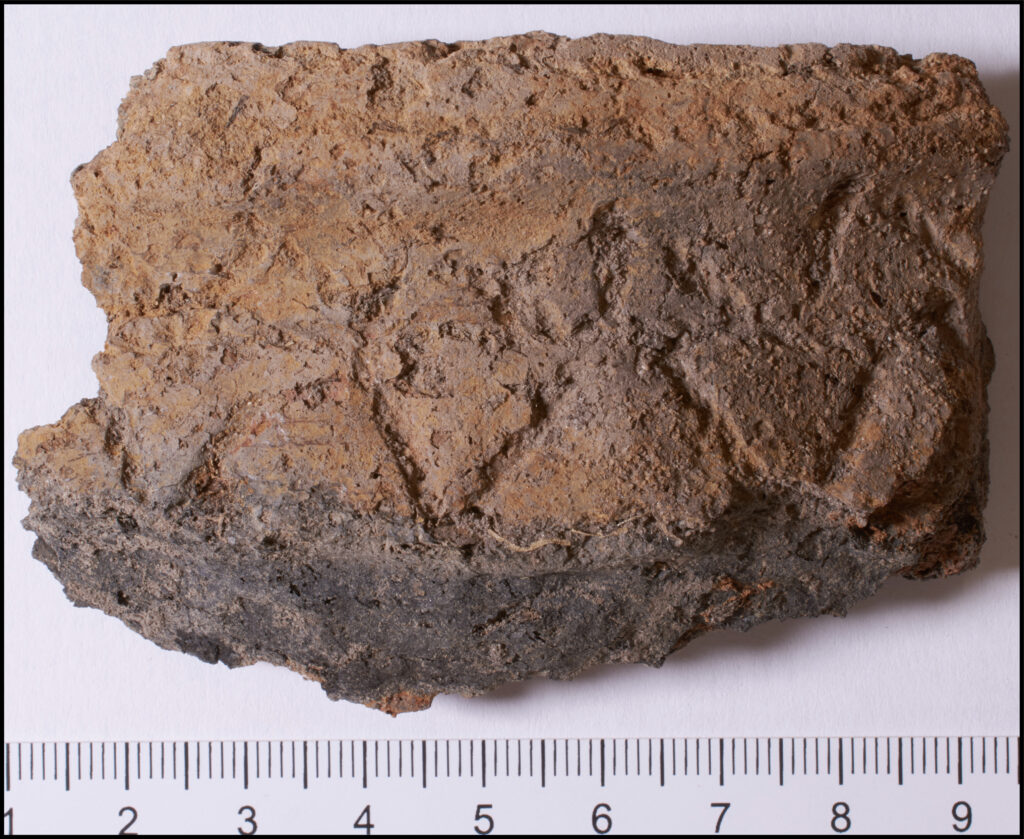
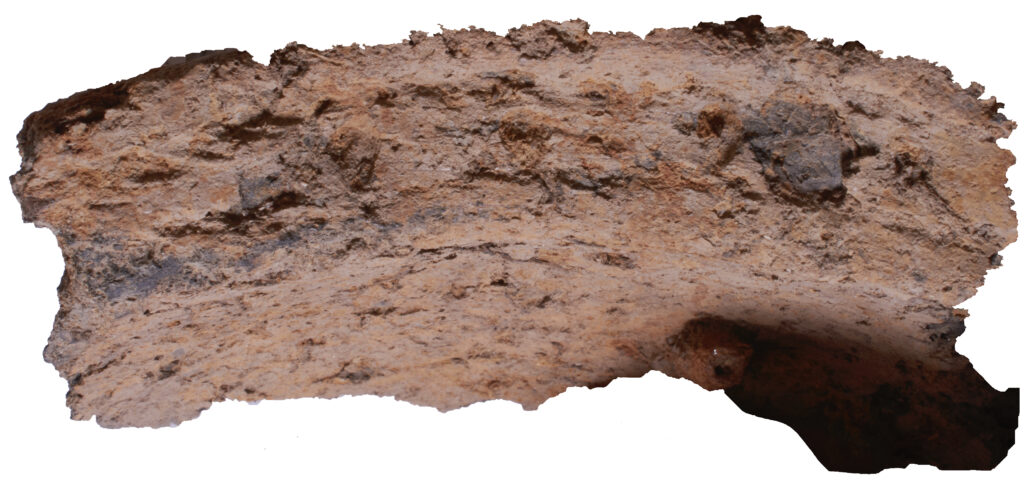
Collared and other Urns
Collared Urns are distributed widely in Britain and are frequently found in funerary contexts, often inverted, containing, or associated with cremations and less often accompanying inhumations. All the vessels from LEB belong to Longworth’s Secondary Series. There are several vessels in the collection that do not readily fall into the Collared Urn category or indeed any other classification system. There are similarities to pottery from Stainsby in the Wolds and the round barrow cemetery at Butterbump on the marsh. Collared Urns in England are very poorly dated, and the LEB excavations provide an excellent opportunity for radiocarbon dating to improve our understanding of Bronze Age chronology. C14 dates are currently being analysed.
